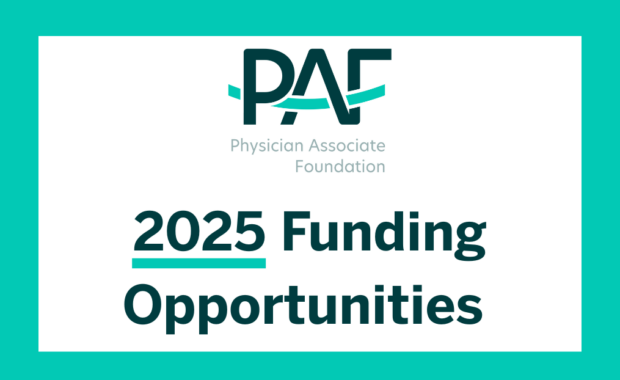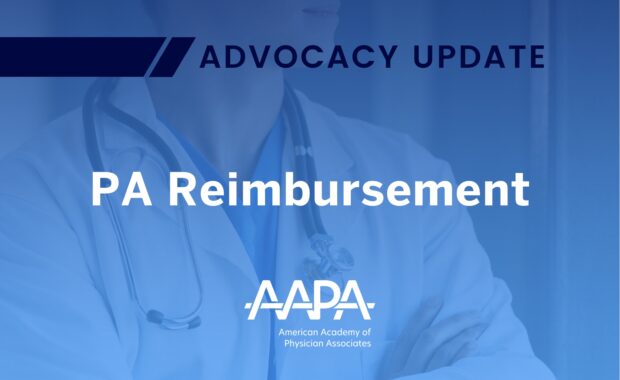What PAs Want in the Workplace: A Supportive Work Environment
 By Bianca Belcher, PA-C, director at the American Academy of PAs’ (AAPA) Center for Healthcare Leadership & Management (CHLM)
By Bianca Belcher, PA-C, director at the American Academy of PAs’ (AAPA) Center for Healthcare Leadership & Management (CHLM)
PAs (physician assistants) are a solution to the nation’s physician shortage and can help meet patient and employer needs. Studies show that PAs provide high quality care and patient satisfaction ratings of PAs are on a par with physicians.
AAPA’s Center for Healthcare Leadership & Management (CHLM) works directly with hospitals and health systems to enhance team-based patient care and optimize PA practice. CHLM partnered with HealthStream, a leading provider of workforce, patient experience, and provider solutions for the healthcare industry, to gain an understanding of what PAs value in their place of employment.
Based on the findings, CHLM developed five key drivers as criteria for its Employer of Excellence Awards. To help employers attract and retain PAs and improve their bottom line, this is the first of a series of articles exploring areas that lead to an ideal PA workplace. In this article, we explore in more detail the first awards criteria: A positive and supportive PA work environment.
NOMINATE YOUR EMPLOYER APPLY NOW
Important to PAs is having a supportive work environment with the following characteristics:
- Awareness of PAs’ capabilities. PAs are looking for employers and organizational leaders who know that PAs are able to perform the full scope of patient care—diagnosing and treating illnesses, prescribing medications, ordering and interpreting tests, coordinating care, ordering hospital admissions, and making other medical decisions.
- Assurance of operational visibility.Like everyone else, PAs want their employers to know, understand, and give them credit for their contributions. That means ensuring that the work PAs perform is attributed to them in the organization’s Electronic Health Records (EHR) system and billed under their name and NPI. If PA work isn’t tracked or if it is attributed to a physician, the work performed by the PA can’t and won’t be appropriately recognized. This is important to employers, too, as they seek to understand how to minimize risk, improve their bottom line, and manage the future move towards value based care.
- Leadership opportunities.Employers who want to attract and retain PAs should focus on providing opportunities for PAs to advance. Many PAs seek opportunities to serve in executive and medical leadership positions. Being prepared for these opportunities is crucial to success, so employers should strive to provide training options for the PAs so they are prepared to compete for and succeed in these roles. Whether it’s internal or external training, preparation and planning on behalf of the employer are keys to the advancement of PA professional growth.
- Scope-of-practice alignment.State laws and regulations that determine PA scope of practice vary, but are consistently improving. In 2016, for example, every state made PA-positive changes to either laws or regulations. It is critical that workplace policies reflect current laws and regulations, so that PAs don’t face unnecessary barriers to practice. Equally important, employers should ensure that PA job responsibilities are aligned with these updated policies. PAs want to practice at the top of their education and experience. Employers who ensure they have the opportunity to do so will benefit from enhanced patient care and more efficient operations.
- Minimized compliance risk.PAs and employers may face increased risks if institutions are not well versed in PA billing and reimbursement regulations. The solution is neither to ignore PA standards and reimbursement regulations, nor to bill only under physicians’ names and NPIs. Understanding billing and reimbursement rules can help improve the efficiency of patient care as well as the organization’s bottom line.
- A positive organizational culture.Employers that embrace a positive workplace culture are much more likely to retain their PAs. Experts estimate that losing a PA within 12-18 months of hiring, often due to low utilization, costs an organization $250,000. Ensuring that PAs are kept informed and part of the ongoing conversation about how to improve patient care will not only improve PA retention, but lead to organizational success.
CHLM works directly with hospitals and health systems to enhance team-based patient care and optimize PA practice. CHLM provides expertise, analytics, and industry best practices to help clients evaluate organizational alternatives designed to improve the effectiveness of their provider workforce.
Thank you for reading AAPA’s News Central
You have 2 articles left this month. Create a free account to read more stories, or become a member for more access to exclusive benefits! Already have an account? Log in.


